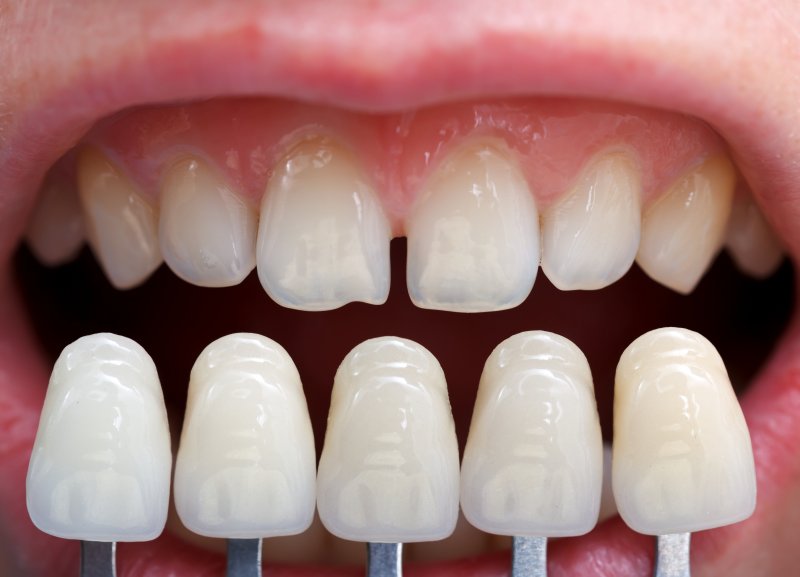
Enhancing your smile is a common aspiration, often driven by the desire to address imperfections like chips and gaps. Cosmetic dentistry offers a solution, and among its array of options, porcelain veneers stand out as a popular choice. If you’re contemplating veneers, the decision between composite and porcelain may be difficult to make. So, keep reading to explore five factors to guide you in the selection process.
#1: Materials
Porcelain veneers consist of thin shells that envelop the frontal tooth surface. Crafted from robust dental-grade porcelain, they boast durability. Additionally, their non-porous nature renders them highly resistant to staining.
In contrast, composite veneers, also known as cosmetic dental bonding, employ a composite resin akin to tooth-colored fillings. This material is more susceptible to staining and breakage compared to porcelain. Nevertheless, it exhibits reasonable resilience to everyday wear and tear.
#2: Longevity
Porcelain veneers typically endure for 10 to 15 years. Due to the slight removal of tooth enamel during placement, this treatment is considered semi-permanent.
Composite veneers, lasting four to eight years on average, do not necessitate permanent alterations to your dental structure. While veneer recipients must anticipate replacements at their lifecycle’s conclusion, those opting for cosmetic bonding have the flexibility to reevaluate.
#3: Appearance
Both porcelain and composite veneers are meticulously color-matched to your surrounding teeth, ensuring seamless integration with your natural smile. Moreover, both options effectively correct various concerns, such as minor misalignment, discoloration, chips, cracks, gaps, and irregular tooth shapes.
#4: Process
As mentioned earlier, attaching porcelain veneers entails minor enamel removal for proper adhesion and a streamlined appearance. Subsequently, dental impressions are taken and sent to a lab, where permanent veneers are meticulously crafted. In the interim, temporary veneers safeguard your smile.
Composite veneers, in contrast, can typically be applied within a single appointment and require no enamel removal. The composite material is molded onto your teeth, solidified using specialized light, and meticulously reshaped until optimal aesthetics are achieved.
#5: Price
While porcelain veneers boast greater longevity and durability compared to composite bonding, they also command a higher price point. The cost may range from $925 to $2,500 per veneer, with an average around $1,500. Conversely, composite veneers tend to range from $250 to $1,500 per tooth. In determining the best fit for your situation, align your choice with both your preferences and budget.
About the Practice
Dedicated to dental excellence, Dr. Sivan Patel, Dr. Amir Danesh Sani, and the team at Brite Smiles serve Des Plaines and neighboring communities with a range of effective oral health solutions. Their expertise extends to aiding you in the selection between composite and porcelain veneers, aligning with your unique needs with your smile aspirations. If you are ready to schedule an appointment with Dr. Patel or Dr. Sani or want to gather more information, you can visit Brite Smiles’ website or call their office at (847) 297-0808.


